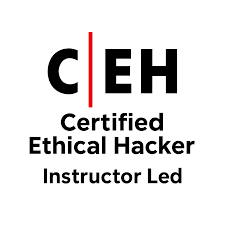Palo Alto Training – Learn Palo Alto Firewalls in 2025

SSRF Unmasked: How Hackers Exploit Server-Side Request Forgery SSRF Unmasked: How Hackers Exploit Server-Side Request Forgery SSRF attacks, or Server-Side Request Forgery, are stealthy SSRF vulnerabilities that trick servers into making unintended requests, often exposing internal systems. This article unmasks how hackers leverage SSRF payloads to target cloud SSRF environments like AWS SSRF, Azure SSRF, […]

SSRF attacks, or Server-Side Request Forgery, are stealthy SSRF vulnerabilities that trick servers into making unintended requests, often exposing internal systems. This article unmasks how hackers leverage SSRF payloads to target cloud SSRF environments like AWS SSRF, Azure SSRF, and GCP SSRF. Highlighted in OWASP SSRF, these flaws can escalate to SSRF to RCE (Remote Code Execution). Explore SSRF real-world cases, SSRF bypass techniques, and robust SSRF prevention strategies to secure SSRF in APIs and SSRF in microservices in 2025.
An SSRF attack occurs when an attacker manipulates a server to send requests to unintended destinations, such as internal IPs or SSRF metadata endpoints (e.g., http://169.254.169.254 in AWS). For example, a feature fetching a user-supplied URL like ?url=http://localhost/admin could expose sensitive data. Blind SSRF hides responses, while SSRF port scanning probes internal networks. In SSRF in serverless or SSRF webhooks, attackers exploit trust, making SSRF testing essential to uncover these risks.
Hackers craft SSRF payloads like http://127.0.0.1:22 to scan ports or http://internal-api/secret to access restricted endpoints. SSRF bypass techniques include SSRF filter evasion with encodings (e.g., @127.0.0.1) or redirects. SSRF real-world cases include the 2019 Capital One breach, where an AWS SSRF flaw leaked 100 million records via metadata abuse. In cloud SSRF (e.g., Azure SSRF, GCP SSRF), attackers target instance metadata, while SSRF to RCE exploits misconfigured servers for full control.
SSRF defense requires proactive SSRF mitigation patterns:
example.com), blocking internal IPs.localhost or 0.0.0.0 to thwart SSRF in APIs.A SSRF cheat sheet aids SSRF testing, while SSRF prevention in SSRF in microservices or SSRF in serverless demands strict controls. WAHS emphasizes these tactics to counter OWASP SSRF risks effectively.
Server-Side Request Forgery unveils hidden dangers, with SSRF attacks exploiting SSRF vulnerabilities in cloud SSRF and beyond. From SSRF payloads targeting SSRF metadata endpoints to SSRF real-world cases like Capital One, the stakes are high. SSRF defense with SSRF URL whitelisting and SSRF mitigation patterns is key. Learn these skills with the WAHS certification at SecureValley Training Center, or explore our program at WAHS. Secure your servers now!
For more info, see Wikipedia, University of Rennes, or Gartner.
Get certified with industry-leading cybersecurity certifications from EC-Council, PECB, Palo Alto Networks, and more.

Learn from world-class instructors Collaborate with top professionals Advanced training...

The CEH is the world's leading cybersecurity certification, recognized by...

Onsite training course Led by an instructor Interactive sessions

Asynchronous, self-study environment Video-streaming format Flexible learning schedule
Adding {{itemName}} to cart
Added {{itemName}} to cart

